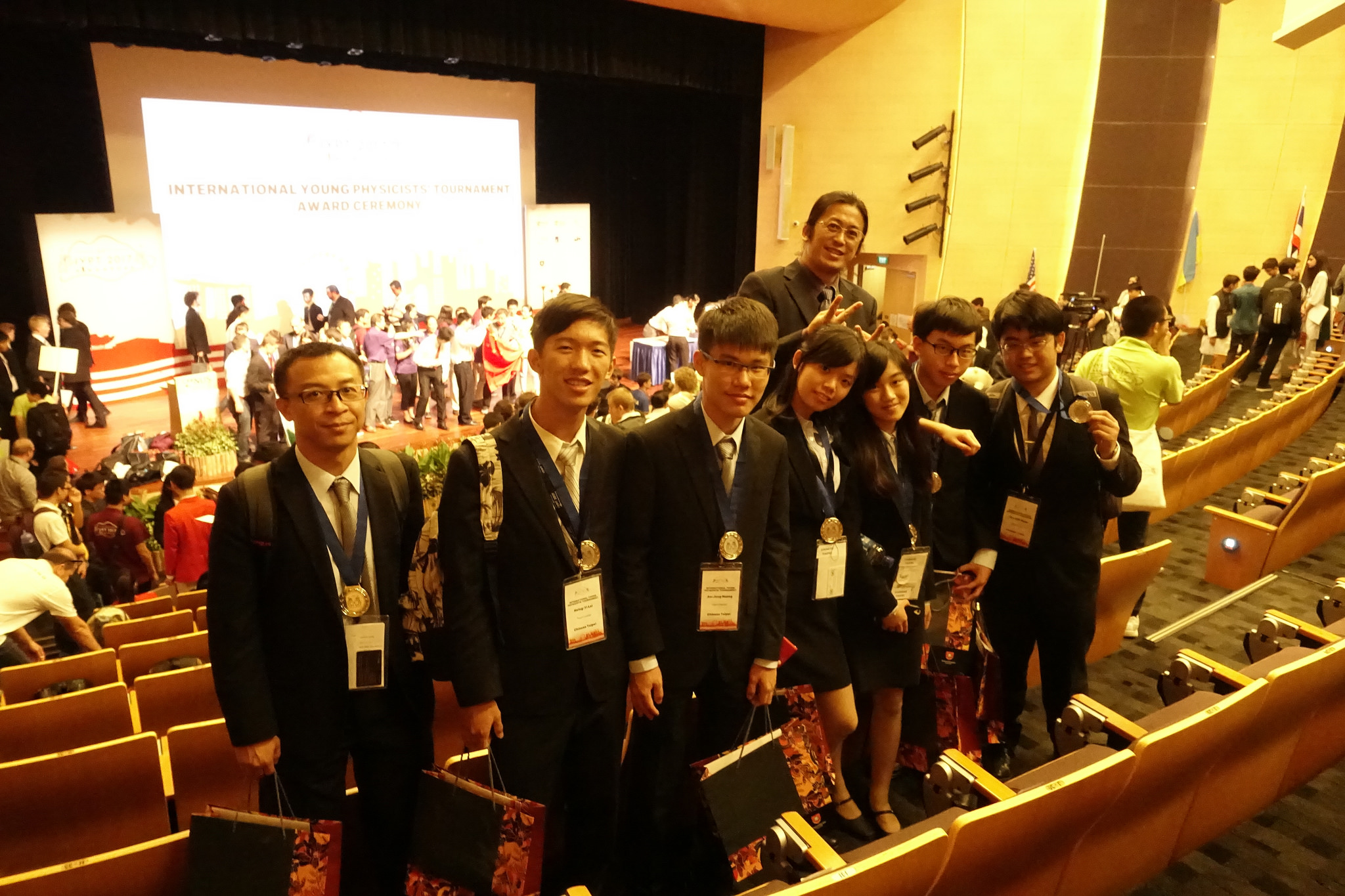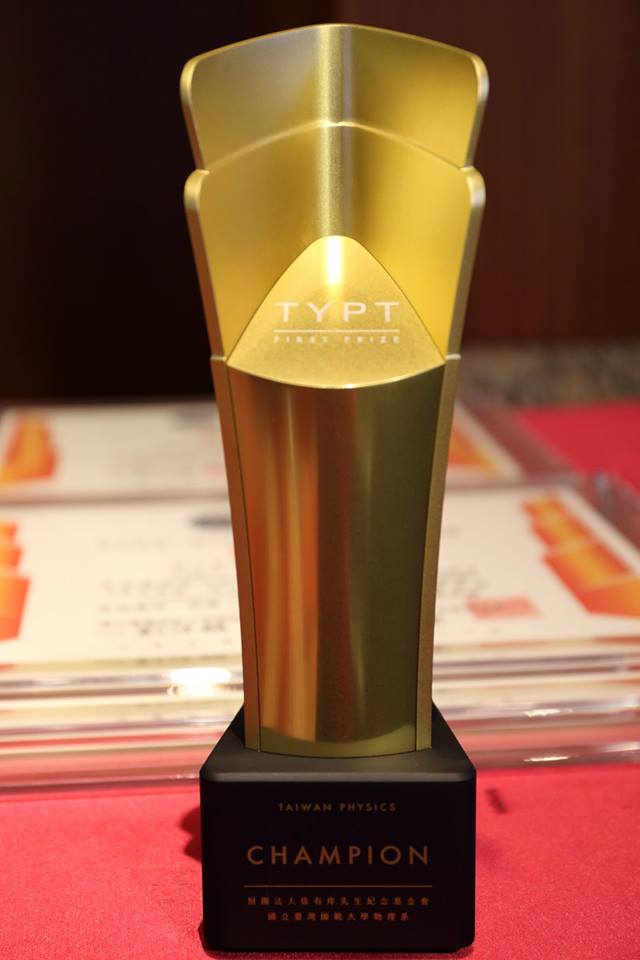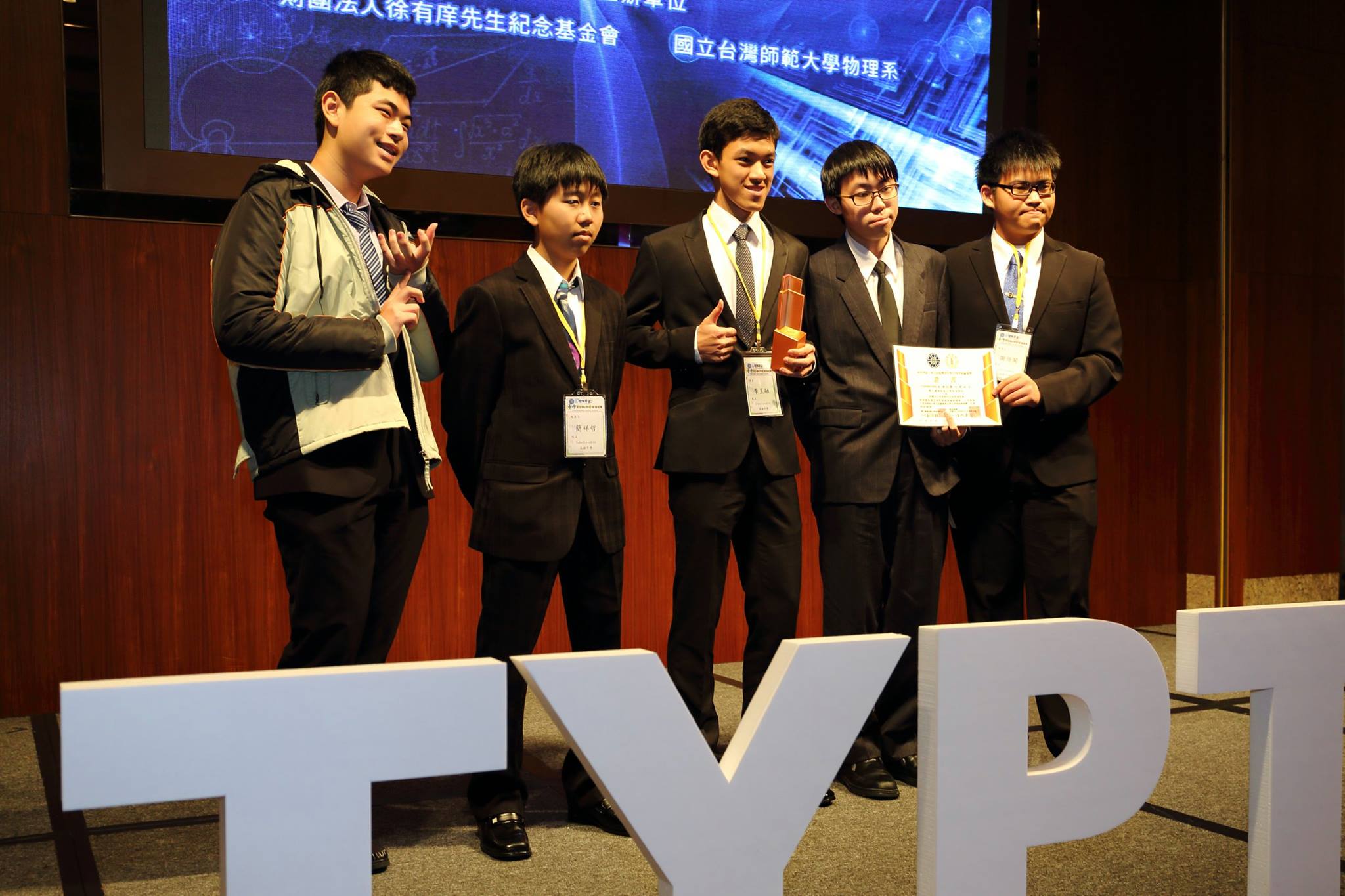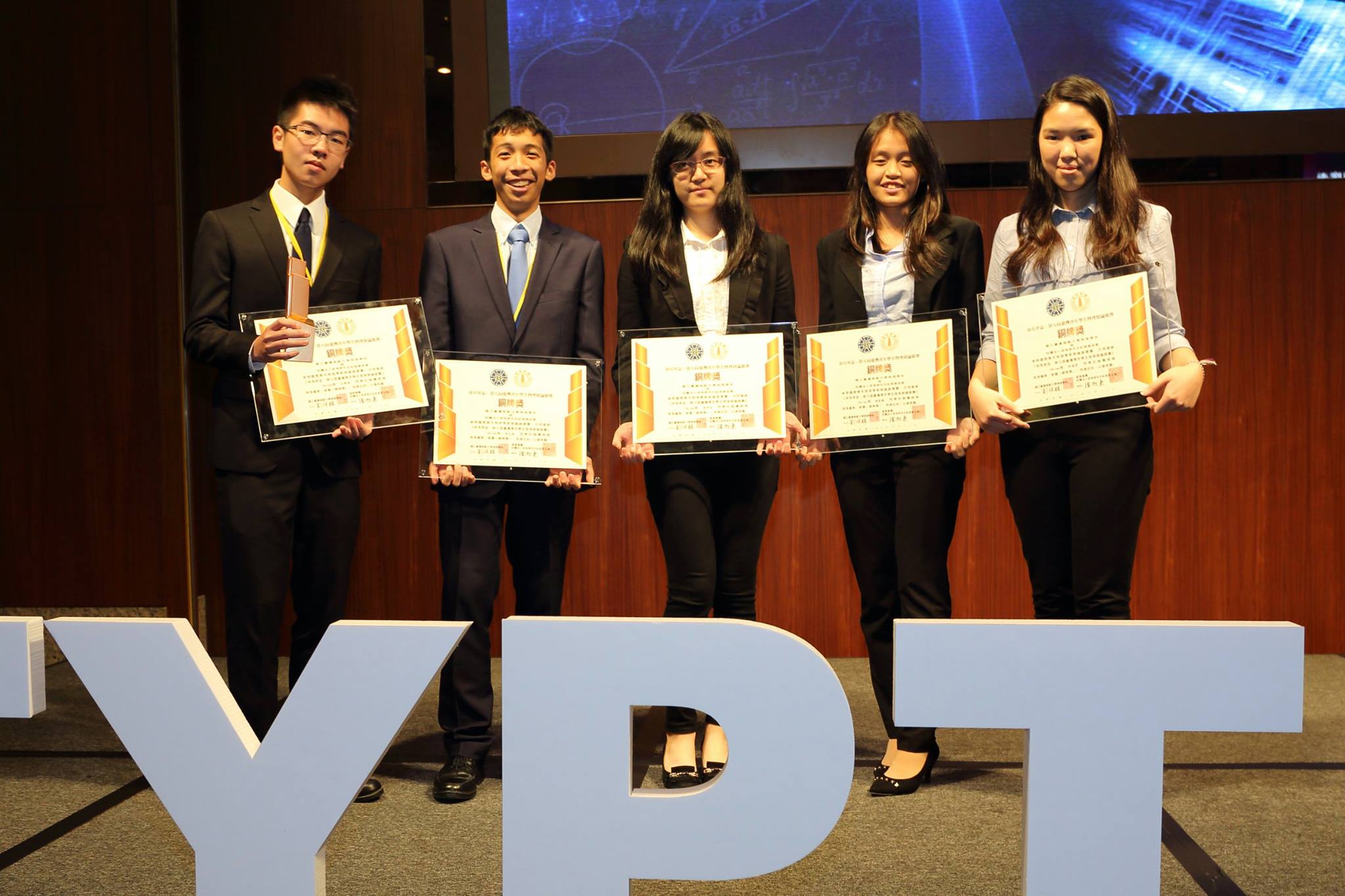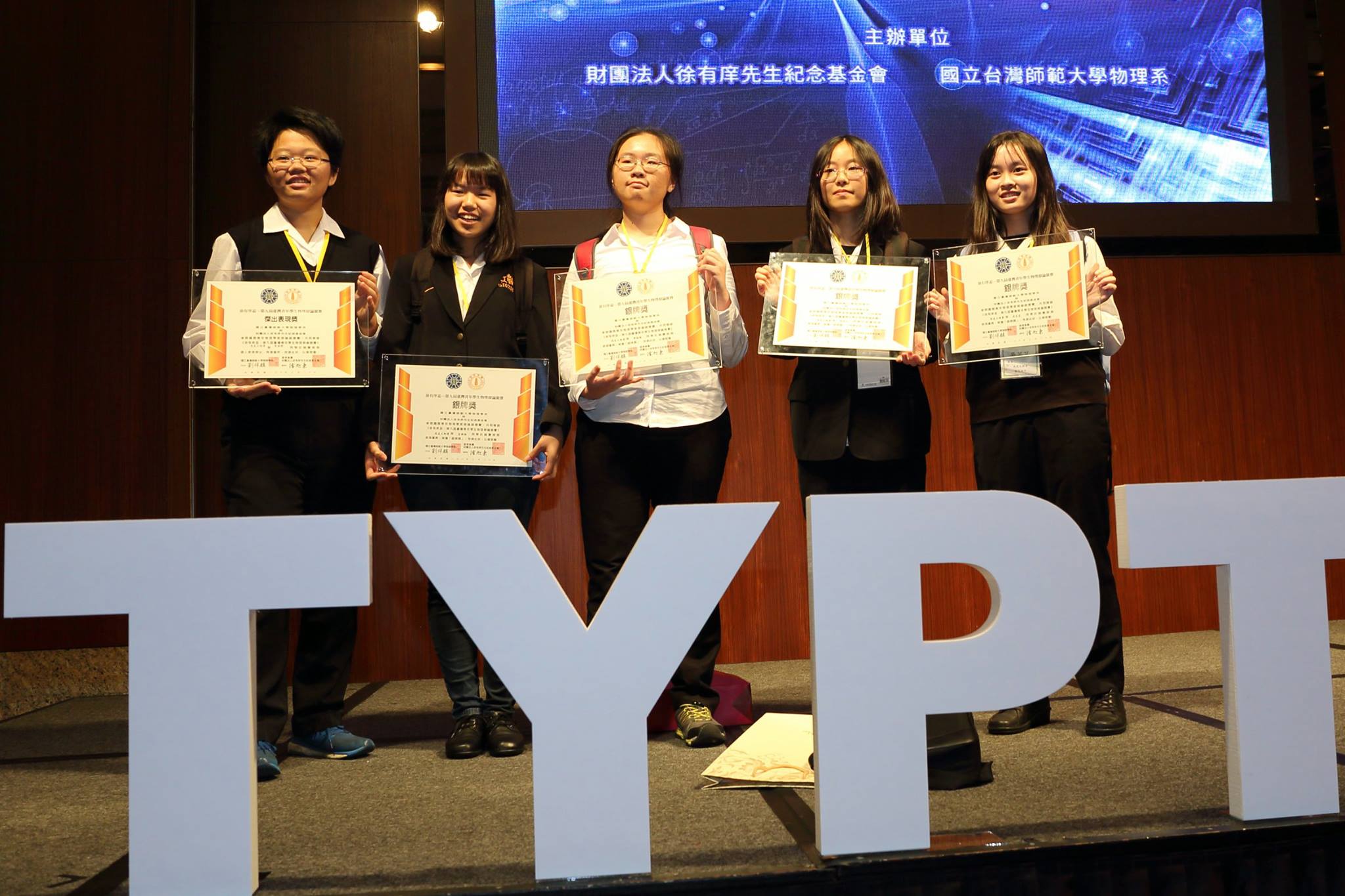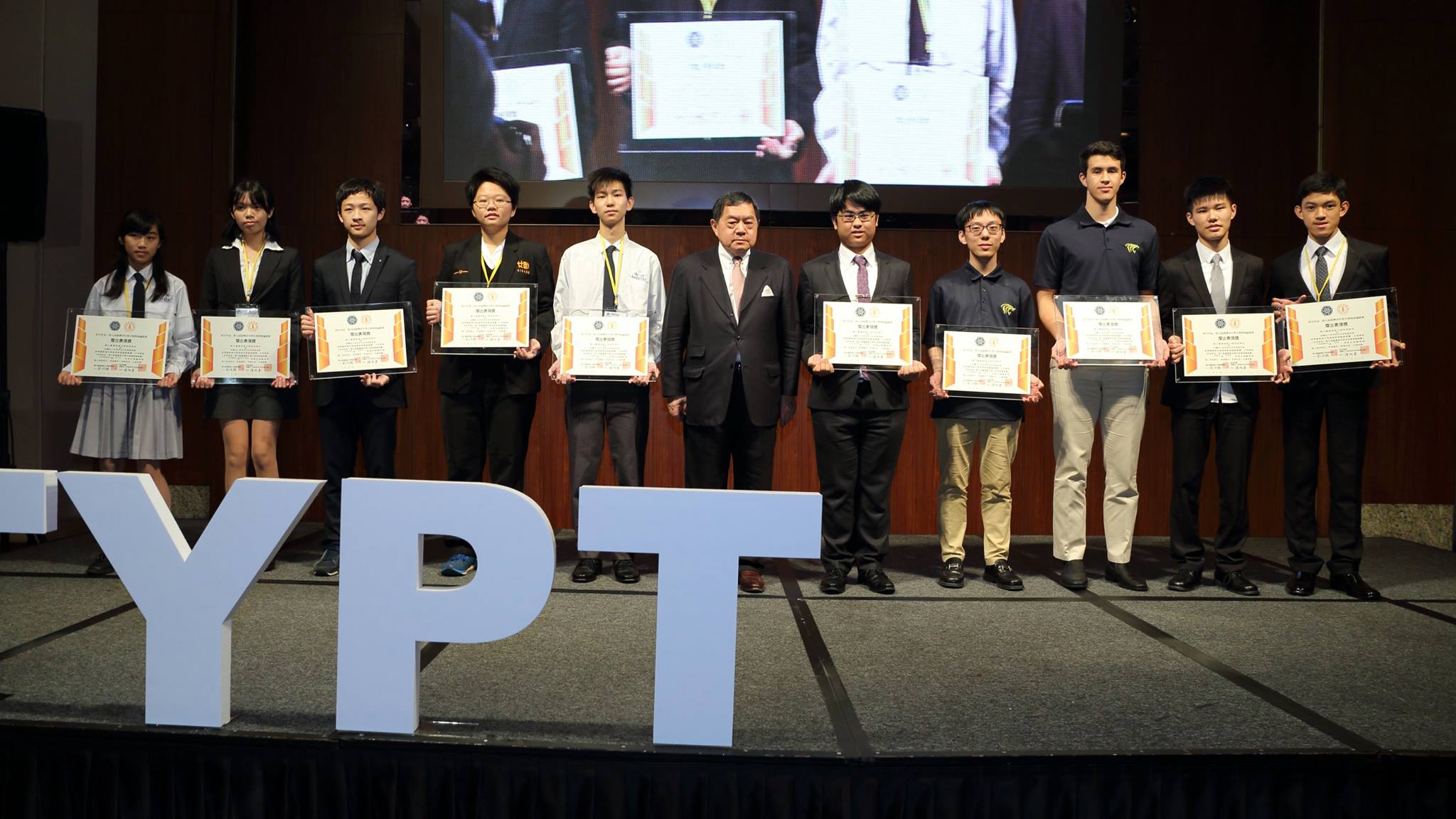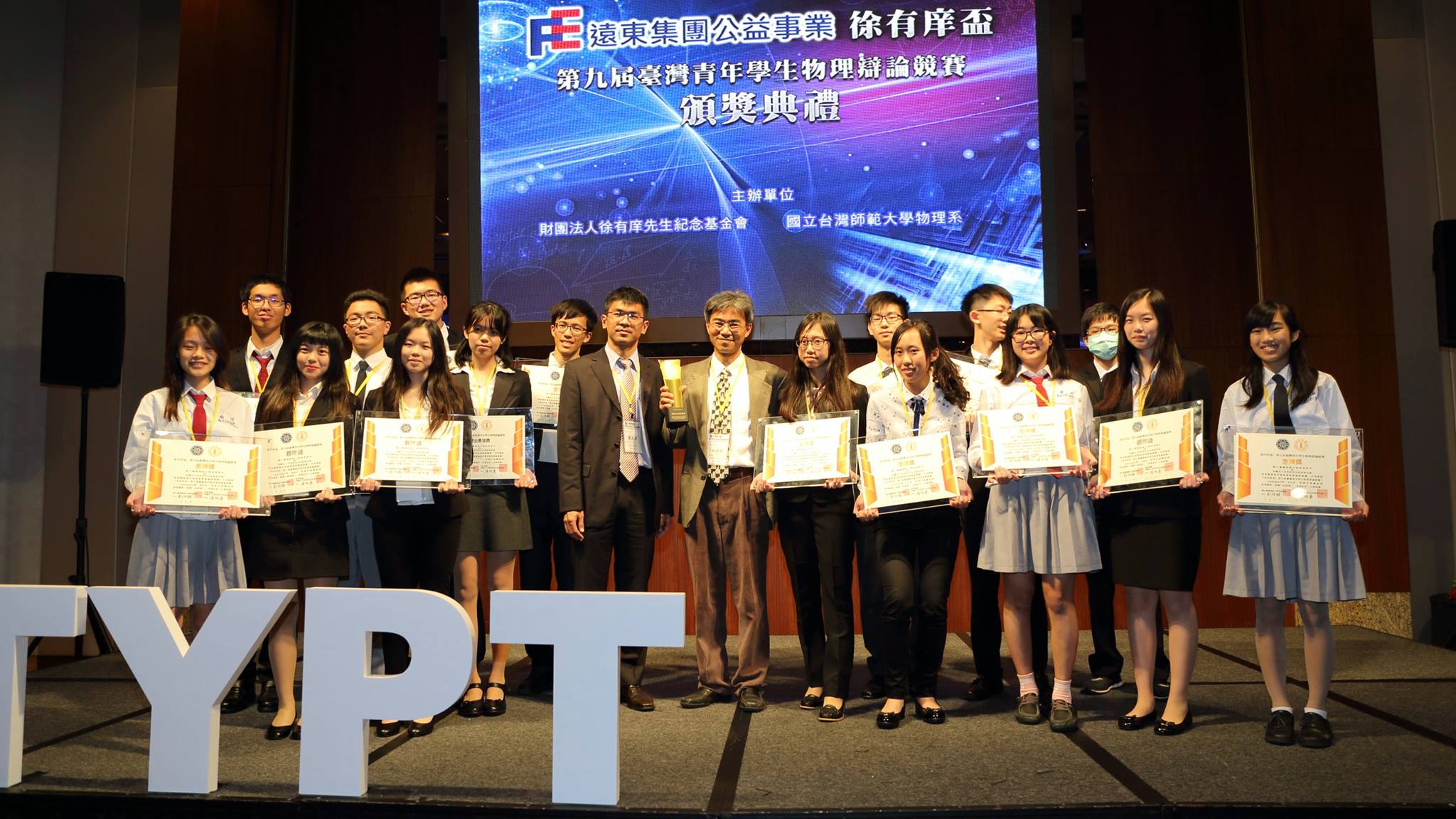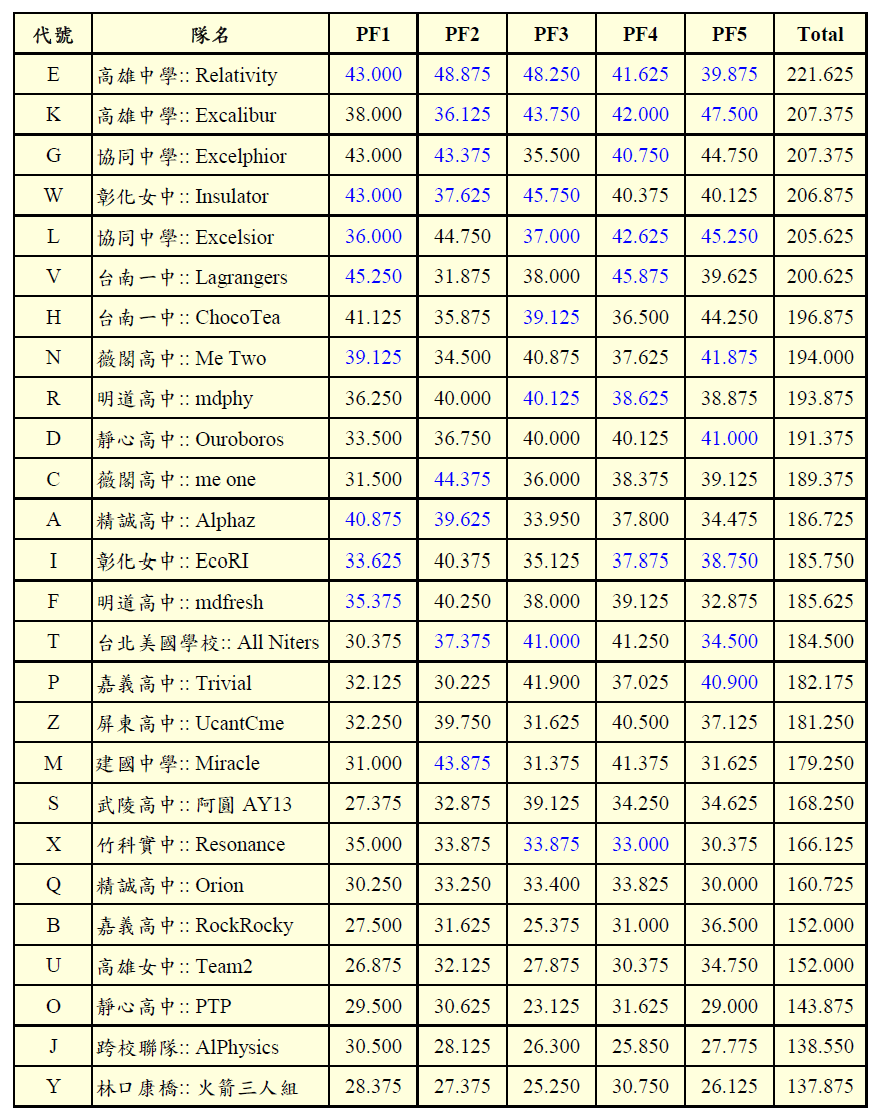徐有庠盃-第十六屆臺灣青年學生物理辯論競賽得獎名單 (2024 TYPT Award List)
| 金牌(決賽成績) | 個人獎 | ||||
| 高雄高級中學 | Excalibur | 陳軒 | 協同高級中學 | Excelphior | |
| 協同高級中學 | Excelphior | 黃宥潔 | 彰化女子高級中學 | Insulator | |
| 高雄高級中學 | Relativity | 何承祐 | 嘉義高級中學 | Trivial | |
| 林永章 | 高雄高級中學 | Relativity | |||
| 銀牌 | 陳俞蒨 | 協同高級中學 | Excelsior | ||
| 彰化女子高級中學 | Insulator | 葉亘祐 | 精誠高級中學 | Alphaz | |
| 協同高級中學 | Excelsior | 李安哲 | 臺南第一高級中學 | Lagrangers | |
| 臺南第一高級中學 | Lagrangers | 吳政諺 | 靜心高級中學 | Ouroboros | |
| 臺南第一高級中學 | ChocoTea | 羅大釗 | 高雄高級中學 | Relativity | |
| 薇閣高級中學 | Me Two | 王宣棋 | 薇閣高級中學 | Me Two | |
| 銅牌 | |||||
| 明道高級中學 | mdphy | ||||
| 靜心高級中學 | Ouroboros | ||||
| 薇閣高級中學 | me one | ||||
| 精誠高級中學 | Alphaz | ||||
| 彰化女子高級中學 | EcoRI |


